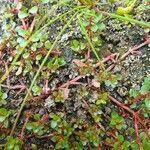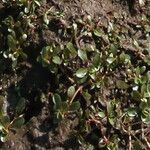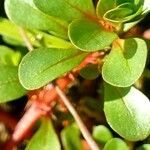A low herb often lie along the ground. It creeps. It is an annual plant and hairless. The stems form roots at the nodes. The leaves are opposite and fleshy. They are oval and taper to a short stalk. The flowers are purple and small. They are 1-2 mm across. They occur singly at the base of the leaves. They have 6 petals.





